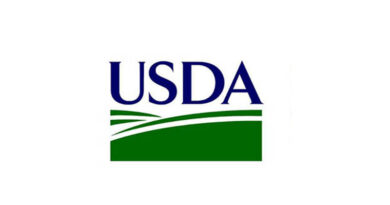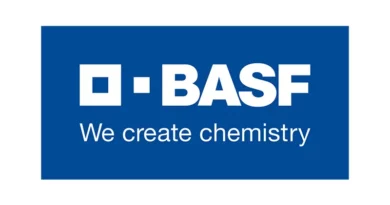Australia: CSIRO tours address mouse control in WA’s regions
09 April 2022, Australia: Western Australia growers across the state’s mouse-troubled regions were visited by leading CSIRO rodent management scientists last week as part of a Grains Research and Development Corporation (GRDC) investment addressing increased mouse activity.
The ‘Mouse Roadshows’ travelled to 21 locations in the mid west and great southern across four days, from Northampton through to Dalwallinu in the north and Esperance across to Wagin in the south, with 245 growers and advisers attending the small group sessions.
Each workshop delivered regionally specific information ahead of anticipated mouse control issues throughout 2022.
Leading rodent management scientist Mr Steve Henry and biosecurity ecologist Dr Wendy Ruscoe, from Australia’s national science agency, CSIRO, delivered the workshops in collaboration with local industry partners and grower groups, focusing on awareness, monitoring and practical information for on-farm management.
Mr Henry said it was crucial that mouse activity in the Geraldton, Albany and Esperance port zones was monitored over the coming months to ensure growers and local bait suppliers are prepared for potential outbreaks.
“Mice start breeding at six weeks old and have litters of six to 10 pups every 19 to 21 days. Breeding starts in spring and can continue through to late autumn. If conditions are favourable, the rate of increase is dramatic,” Mr Henry said.
“The big question I like to ask farmers is, do you know what’s happening in your paddocks, particularly in big stubbles? Any paddocks that have big head loss, either before or after the header has gone through, are the paddocks that have the most mice in them.”
At this time of the year, when there’s lots of food around, active burrows are the best way to monitor mouse populations.
“Get out of the ute and walk through your paddock to calculate the number of burrows per hectare. If you’ve got more than 100 burrows per hectare you need to be vigilant, keep monitoring and be prepared to bait when you sow the crop,” Mr Henry concluded.
Group discussions from growers focused on issues including managing mice at seeding, baiting efficiency and economic return, burning stubble and soil amelioration and their impact on mouse numbers, and aerial baiting.
Liebe Group development and support officer Rebecca Wallis said that growers had heard a lot about mouse activity in the northern wheatbelt over the past year but weren’t sure how widespread the problem was.
“Now we’ve seen a lot more mouse activity over summer, including around our houses and sheds, we anticipated they were going to be an issue in the paddock,” Ms Wallace said.
“The big question I like to ask farmers is, do you know what’s happening in your paddocks, particularly in big stubbles? Any paddocks that have big head loss, either before or after the header has gone through, are the paddocks that have the most mice in them.”
At this time of the year, when there’s lots of food around, active burrows are the best way to monitor mouse populations.
“Get out of the ute and walk through your paddock to calculate the number of burrows per hectare. If you’ve got more than 100 burrows per hectare you need to be vigilant, keep monitoring and be prepared to bait when you sow the crop,” Mr Henry concluded.
Group discussions from growers focused on issues including managing mice at seeding, baiting efficiency and economic return, burning stubble and soil amelioration and their impact on mouse numbers, and aerial baiting.
Liebe Group development and support officer Rebecca Wallis said that growers had heard a lot about mouse activity in the northern wheatbelt over the past year but weren’t sure how widespread the problem was.
“Now we’ve seen a lot more mouse activity over summer, including around our houses and sheds, we anticipated they were going to be an issue in the paddock,” Ms Wallace said.
“Having someone like Steve come out and look at paddocks and assess the mouse control problem, or potential problem, has helped growers understand the extent of the issue in their local area.
“From a Liebe Group perspective, we always value having experts come and talk to growers in the regions, so we’re grateful to GRDC for making this type of event happen.”
Morowa Farm Improvement Group Chair and local grower Travis Collins said that following the workshops, he was implementing Mr Henry’s advice to bait early.
“It’s great that Steve came over and that GRDC and CSIRO are supporting mouse research in WA. Steve has a lot of knowledge that is valuable for growers, especially at this time of year,” Mr Collins said.
GRDC crop protection manager – west Georgia Megirian said that GRDC was working with industry partners and grower groups to ensure that growers could be part of a coordinated response to mouse management.
“Local support is imperative to the getting message out and managing the problem, as the best approach is proactive management across larger areas and multiple properties to keep infestations under control,” Ms Megirian said.
“The workshops provided in-paddock, seasonally relevant information to growers, with opportunities to look for signs of mouse activity and active burrows, ask questions, optimise management in their particular farming systems and learn about issues growers are facing.
“The project is part of the $7.5 million GRDC has invested nationally into mouse outbreak research, development and extension (RD&E) with CSIRO, centred around better understanding mice in cropping systems, such as the impact of residual food in stubbles, increasing surveillance and improving strategic management options.”















